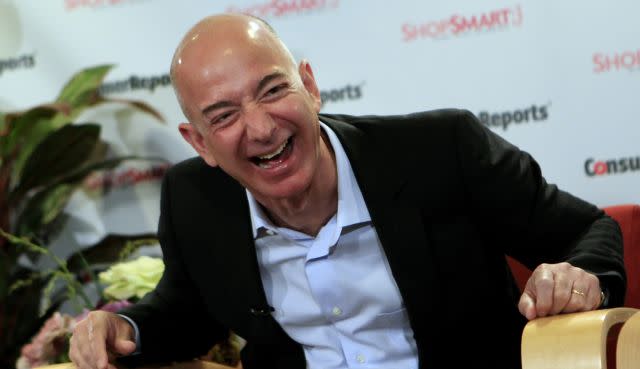Jeff Bezos wants to know if anyone can run Amazon, besides Jeff Bezos

Amazon has promoted two executives and given them the rank of CEO of their respective divisions, a move that has all the signs of a contest to determine who succeeds company founder Jeff Bezos as the company’s capo di tutti capi.
On April 7, Jeff Wilke was named CEO of Amazon’s worldwide consumer businesses, and Andy Jassy the CEO of Amazon web services, something the company said was “not a reorganization but rather a recognition of the roles they’ve played for a while.”
But it also effectively sets the stage for a horse race to see who takes over for Bezos when he retires. While Bezos is only 52, he’s increasingly interested in other projects, such as commercializing his Blue Origin rocket company and owning the Washington Post. It’s not hard to imagine him handing over day-to-day management and remaining on as chairman, much as Bill Gates did at Microsoft in 2000. Amazon didn’t immediately respond to a request for comment.
Pitting two or more candidates against each other isn’t a new strategy, and it often works. One of the most famous examples was the contest at to succeed Jack Welch at GE, where Jeff Immelt emerged the winner of a three-way race with Bob Nardelli and Jim McNerny in 2000. While Immelt has been a steady leader of GE for more than a decade, and McNerney went on to success at 3M and Boeing, Nardelli crashed and burned in disastrous stints at Home Depot and Chrysler. GE’s process at least avoided that outcome.
The downside of a horse race is that it identifies clear winners and losers, leading to hurt feelings among those not selected. That usually sends them packing, depriving the organization of talent it still could make use of just below the CEO level. After Andrew Witty won the contest to run the UK pharmaceutical giant GlaxoSmithKline in 2008, one of his rivals for the job, Chris Viehbacher, left to run Sanofi, despite Witty’s efforts to retain him.
Then there’s the fiasco that has befallen Disney. This week, Thomas Staggs, the chief operating officer and heir apparent to Robert Iger, was told by the board that the company would be considering other CEO candidates. Staggs had already seemingly won a contest with Jay Rasulo, the Disney CFO, for the top job, leading Rasulo to depart last year. The process literally was a text-book example of how to manage succession, having been cited in a Stanford business volume, according to Times columnist James Stewart. Yet now Disney is without any clear plan to replace Iger, 65, who plans to step down in 2018.
Given Amazon’s cut-throat culture, the horse race seems like an obvious way for Bezos to size up his potential successors. But he better be sure at least one of them is the right man for the job—and that he could cope with losing either of them.

Sign up for the Quartz Daily Brief, our free daily newsletter with the world’s most important and interesting news.
More stories from Quartz:

 Yahoo Finanzen
Yahoo Finanzen 